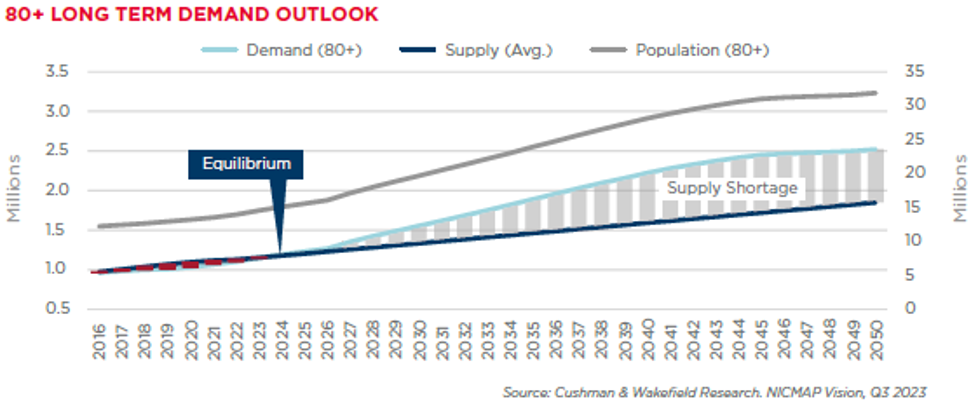CHICAGO — Cushman & Wakefield has released its U.S. Senior Living & Care Investor Survey and Trends Report, indicating continued strong performance of the seniors housing asset class with stabilized occupancy trending upward for the 10th consecutive quarter, reaching 85 percent for primary markets and 87 percent for secondary markets.
Moving forward, the Northeast markets are projected to show the strongest near-term performance while the Southwest and Southeast markets are anticipated to experience downward pressure on occupancy and rent growth as new supply is introduced.
Construction starts have receded to the lowest levels since the Great Financial Crisis, but demand persists and is expected to continue to accelerate, driving continued improvement in property market fundamentals for the remainder of 2023 and into 2024.
“The slowing of construction bodes well for owners as it will only amplify supply shortages as the population continues to age,” says Zach Bowyer, senior managing director of Cushman & Wakefield Valuation & Advisory, as well as head of living sectors. “In fact, to meet peak demand levels as our population ages, supply would have to increase by 35,000 units per year, starting today. More apparent is that fact that over half of middle-income seniors will not have adequate finances to afford assisted living.”
The cost of debt is stressing short-term valuations, with senior living transaction volume down 51 percent year-over-year (YOY), and the price per unit, at $111,000, down nearly 54 percent from peak pricing.
“Capital sources are shifting as investors seek risk-adjusted returns and are adapting to the lack of liquidity and current pricing in the debt markets,” says Bowyer. “Most owners with well-located properties and healthy operating performance are opting not to sell due to the market dislocation.”
Of the more than 90 people who participated in Cushman & Wakefield’s investor survey, 49 percent of investors are targeting core-plus investment strategies, while nearly 34 percent of respondents are focused on opportunistic or distressed investment strategies as dry powder elevates to all-time highs.
To view the company’s full survey analysis, click here.

